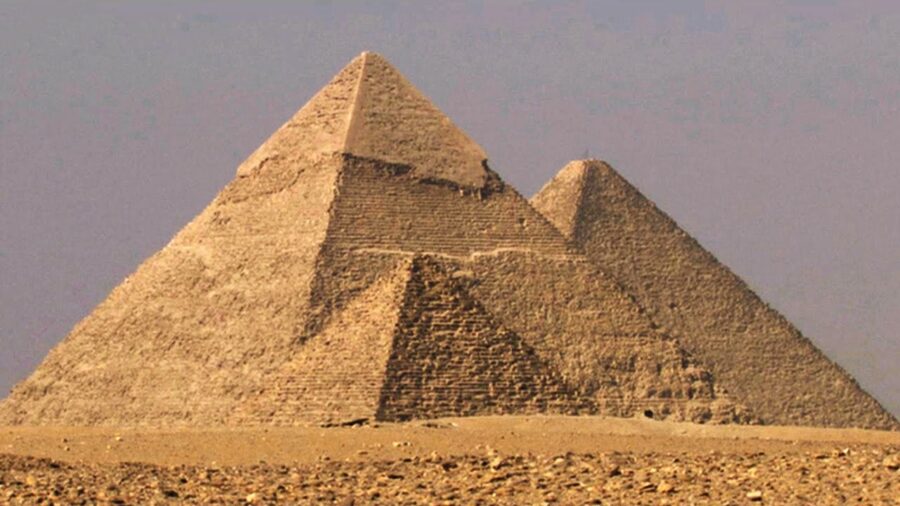Egyptian Pyramids Hiding Lost Secret Of The Nile

The Great Pyramid at Giza is the only wonder of the ancient world that still exists today. This pyramid, along with dozens of others, sits on a narrow strip of desert located west of the Nile River. New research shows that this location wasn’t chosen by the ancient Egyptians by accident, and was actually picked because, long ago, the Nile River stretched out to meet the base of these famous structures.
Heading

There are many theories as to why the Egyptian Pyramids exist and how they were made. Scholars and archeologists stand firm that the purpose of these stone structures were built as monumental tombs for pharaohs and important individuals of ancient Egypt and are the result of an impressive feat of ancient engineering and organizational skill.
However, other theories have captured imaginations across the world, including theories that these pyramids were made by aliens or Atlantians using ancient or other-worldly technology lost to humans today and they served as ancient power plants or energy sources.
An Oasis

While we have the scientific tools and archaeological knowledge to disprove many of these fancy theories, the ancient Egyptian pyramids began construction nearly 5,000 years ago, so there is still much we don’t know about them.
One question scientists have been wondering is why the pyramids were built so far away from the Nile, which was the lifeblood of the ancient peoples. A new study answers this question by suggesting that the desert holding these ancient structures was once an oasis on the bank of a patch of the Nile that dried up millennia ago.
The Ahramat Branch

The team of researchers discovered that 31 of Egypt’s most renowned pyramids, such as the Bent Pyramid and the Step Pyramid of Djoser, were strategically built along a previously unknown 40-mile-long branch of the Nile. They propose to name the Ahramat Branch (Arabic for “pyramids”).
The study utilized advanced satellite imagery, geophysical surveys, and sediment core analysis to pinpoint the location of the ancient river. The researchers found that this forgotten branch once ran through what is now an arid and inhospitable landscape, explaining why the pyramids were built so far from the current banks of the Nile River.
Links To Other Pyramids

As interesting as it is to learn about this long dried up stretch of Nile, these findings are important today. “Revealing this extinct Nile branch can provide a more refined idea of where ancient settlements were possibly located in relation to it and prevent them from being lost to rapid urbanization,” the research team wrote, explaining that this discovery could benefit protection measures of Egyptian cultural heritage.
One significant aspect of the study is the identification of causeways linked to many of the pyramids along the Western Desert Plateau. These causeways, which connected the pyramids to the Ahramat Branch, suggest that the river was likely used to transport the massive construction materials.
Further investigations revealed that inlets feeding the Ahramat Branch are now obscured by sand, making them invisible to optical satellite imagery. However, radar and topographic data unveiled the hidden riverbeds and the pathways leading to pyramids like those of Pepi II and Merenre.
The Giza Inlet

Additionally, the study found that causeways of other pyramids, such as Khafre, Menkaure, and Kentkaus, led to another river arm dubbed the Giza Inlet. This indicates that the river branch was still active during the Old Kingdom’s fourth dynasty.
The research, led by archaeologist Eman Ghoneim from the University of North Carolina Wilmington, concluded that the Ahramat Branch began to dry up around 4,200 years ago. A significant drought likely increased wind-blown sand deposition, which gradually filled in the river branch, eventually making it invisible even to modern satellite imagery.










